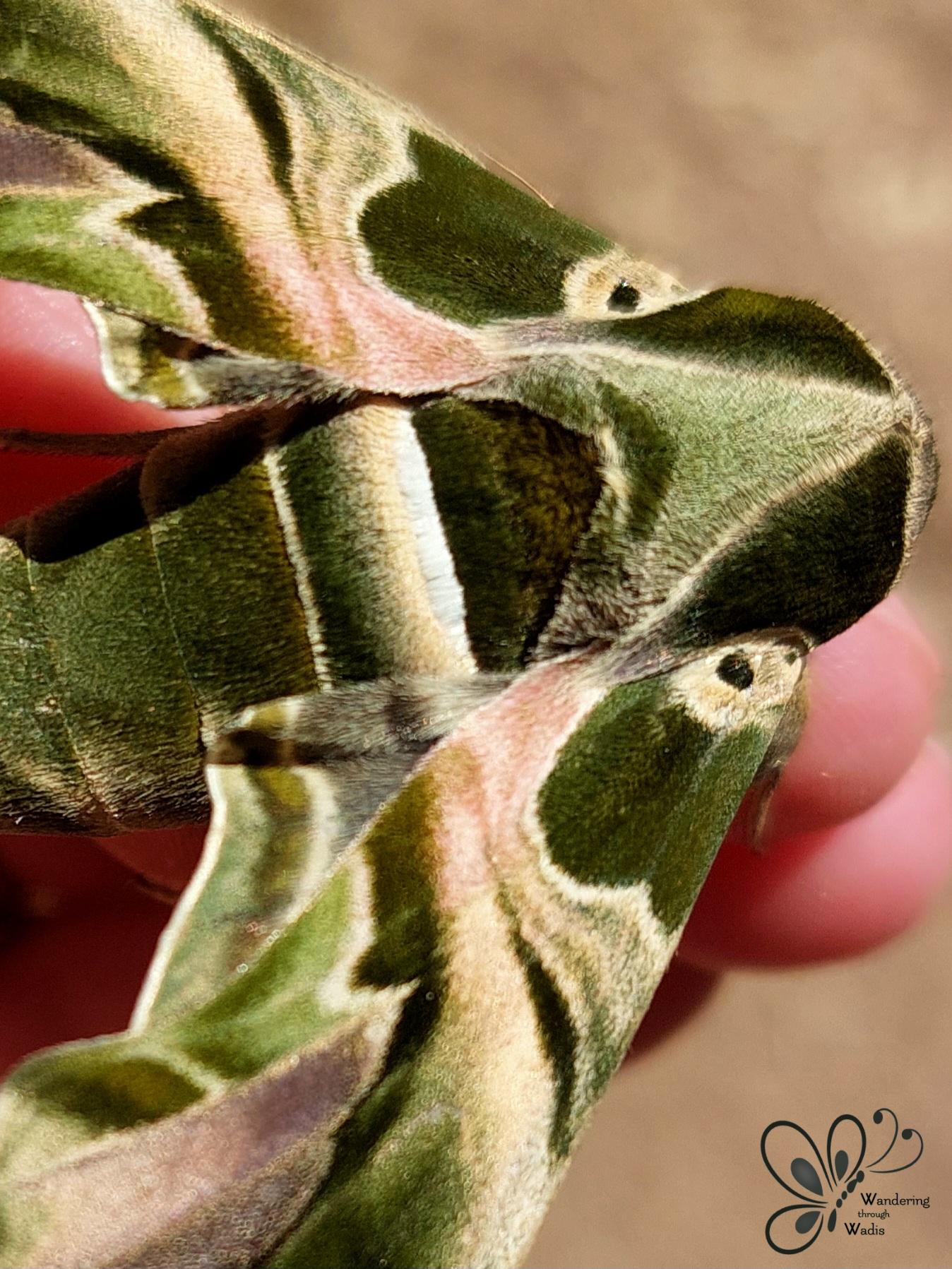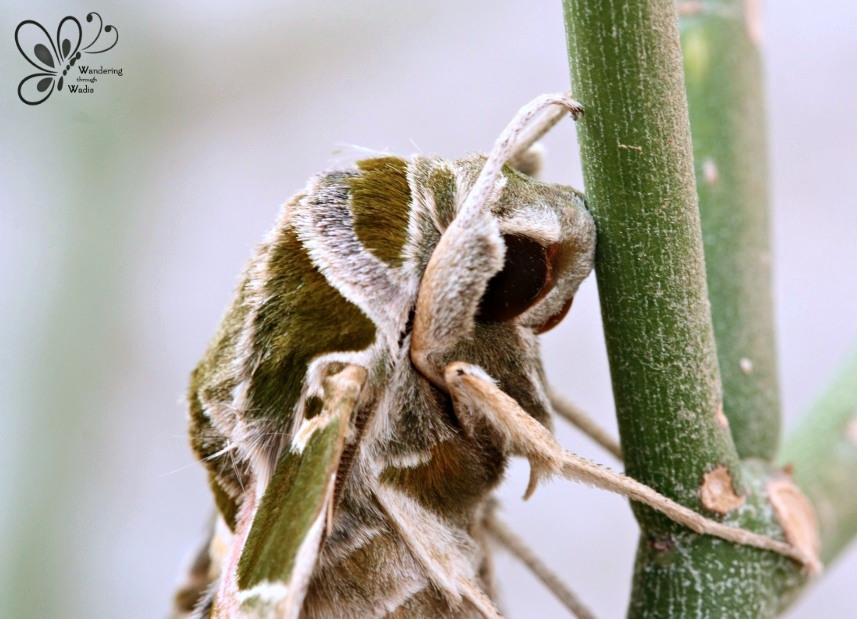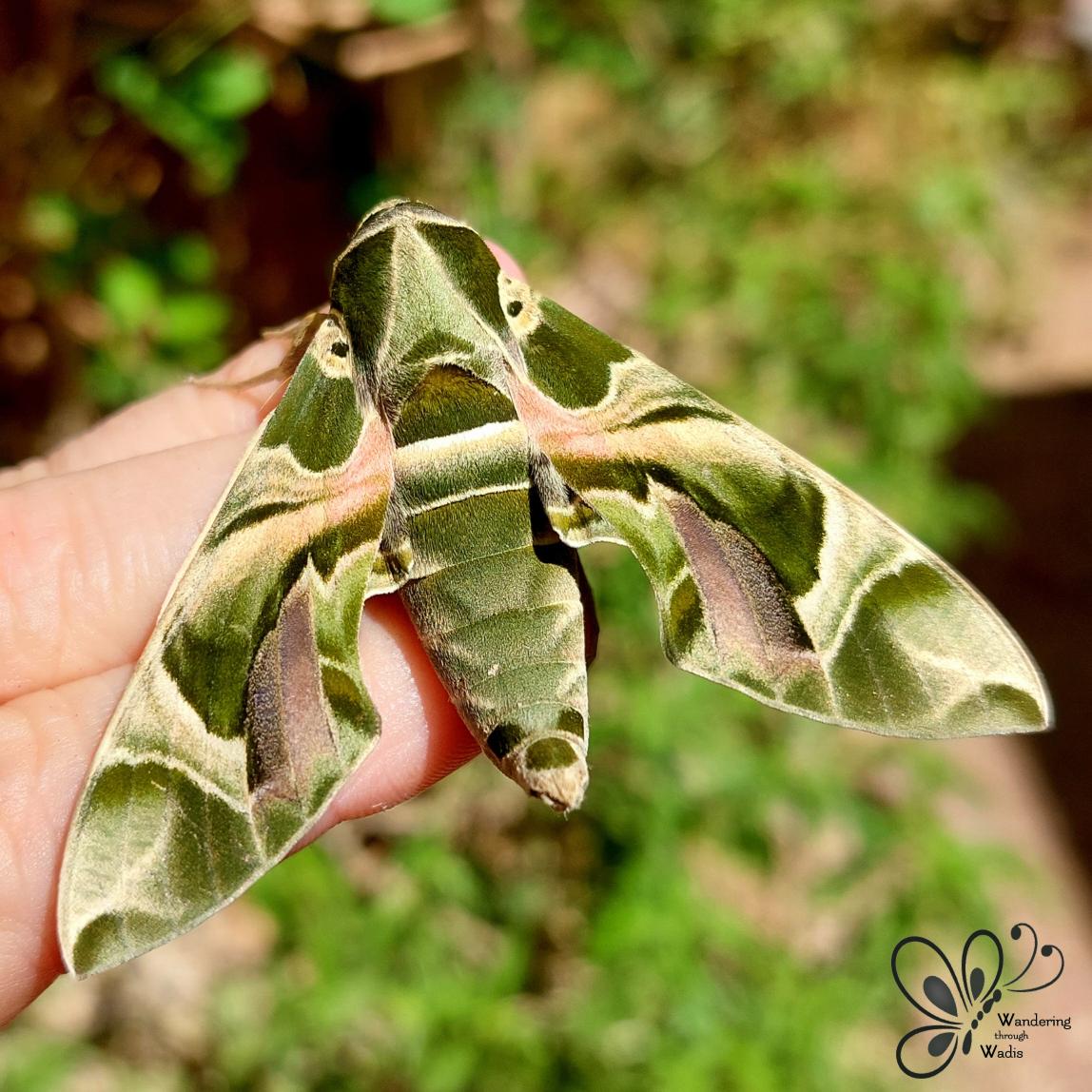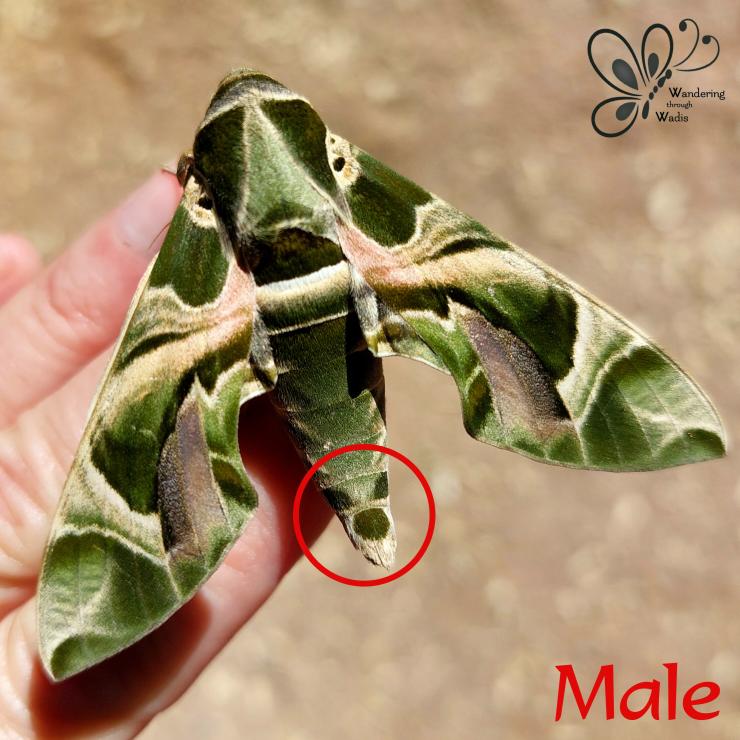The Oleander Hawkmoth (Daphnis nerii), aka the Army Green Hawkmoth, is the most magnificent moth I have seen in the wild. Look at those wings! The colors and designs are truly stunning. That’s why I was so excited last week when my husband called me over to point out the one he had spotted in our desert garden.

This species of hawkmoth is native to areas of Africa and Asia. They are a migratory species, however, and fly to parts of eastern and southern Europe during the summer months. Oleander Hawkmoths have also been introduced in many places around the world.
The larvae, or caterpillars, feed mainly on oleander bushes (Nerium oleander), which of course explains their common English name, as well as other plants in the dogbane family. These plants are highly toxic, but the caterpillars are immune. Oleander, which is not native to Sinai, is the most popular bush to plant along the streets in Dahab because of it’s toxicity. The goats and sheep roaming the streets of Assala typically won’t eat these bushes, so they one of the few that can survive in this part of town. And so there is plenty of food around in my neighborhood for these caterpillars to munch.

And if you thought the were amazing – check out these larvae! They are yellow when they hatch and turn green as they grow older. Like all hawkmoths, there is a “horn” protruding from the rear end of their body. There are large blue and white eyespots near the head (which are used as part of their defense system), a white band along the side of the body, and white and bluish dots. The caterpillar can grow up to 8.5 cm in length and turns brown shortly before it is ready to pupate.


Fresh pupa are cream-colored but turn reddish-brown in color and will lie directly on the ground or under leaf litter.

Adult moths have a greenish head with a gray band at the vertex and a green thorax with a black/tan belt across the center. The forewings are patterned with green, whitish, and rosy-colored curved bands. At the base of these wings is a white patch with a black spot.



Adults drink the nectar from a variety of flowers and are especially active at twilight, just after sunset. Oleander Hawkmoths may be important pollinators, and can find themselves prey to birds, lizards, and bats.

Their life cycle, from egg-laying to adulthood, takes between 28 – 30 days.

Read about other hawkmoths in Sinai:
Convolvulus Hawkmoth (Agrius convolvuli)
